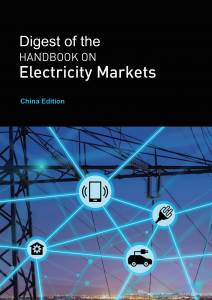![]()
 English Edition
English Edition
PDF (1.38 MB)
Kindle (mobi) (3.67 MB)
eBook (epub) (1.72 MB)
FOREWORD
The record-breaking temperatures seen in the summer of 2022 have shown the impact of global warming. Whether in Europe or China, no one can escape it.
Decarbonisation is the only way forward: future electricity generation will have to come to a large extent from renewable energy with the remaining share coming from other low-carbon sources. The tremendous growth of renewable electricity capacity is fundamentally changing global electricity systems and presents power grids with enormous challenges. In the past decade, China has emerged as a global renewable energy champion, ranking first for both investment in and production of renewable energy. In 2021, renewable power plants made up more than 1 000 GW of China’s 2 200 GW installed power capacity, in a mix of solar, wind and hydropower. With the new round of power market reforms in 2015, the coal-fired power tariff reform in October 2021 and the announcement in January 2022 that a national unified power market system is to be established, momentum is building for the creation of an electricity market in China.
China’s power market designers and policy makers are now grappling with the problem of how to integrate intermittent renewable energy effectively under China’s socio-technical system. It is a good moment to find out about the experiences of other power markets throughout the world that have confronted similar issues. What market measures have helped to minimise power curtailment, blackouts, and stranded assets?
The publication of the Handbook on Electricity Markets in November 2021 could not have come at a better moment. Edited by Jean-Michel Glachant, Director of the Florence School of Regulation, Paul L. Joskow, Massachusetts Institute of Technology, and Michael G. Pollitt, University of Cambridge, it includes contributions from the most brilliant thinkers and experts in the field of electricity markets.
The EU-China Energy Cooperation Platform has commissioned an EU-funded Digest of the Handbook so that its key points are available to busy decision-makers. Jean-Michel Glachant and Nicolò Rossetto of the Florence School of Regulation have condensed its contents, in consultation with its numerous expert contributors. An edition of the Digest is available for distribution in China, alongside an international edition in both Chinese and English. The China edition includes an extra chapter, ‘Takeaways from the Handbook on Electricity Markets in China,’ by Michael G. Pollitt.
In commissioning the Digest, ECECP hopes to ensure that the wealth of information in the handbook can reach the widest possible readership, and so share findings that could help to ease the global transition to a carbon-free economy.
Dr Flora Kan
Team Leader of the EU-China Energy Cooperation Platform
Note: Both China edition and international edition of the Digest are published in Cadmus, the European University Research Repository with open access.